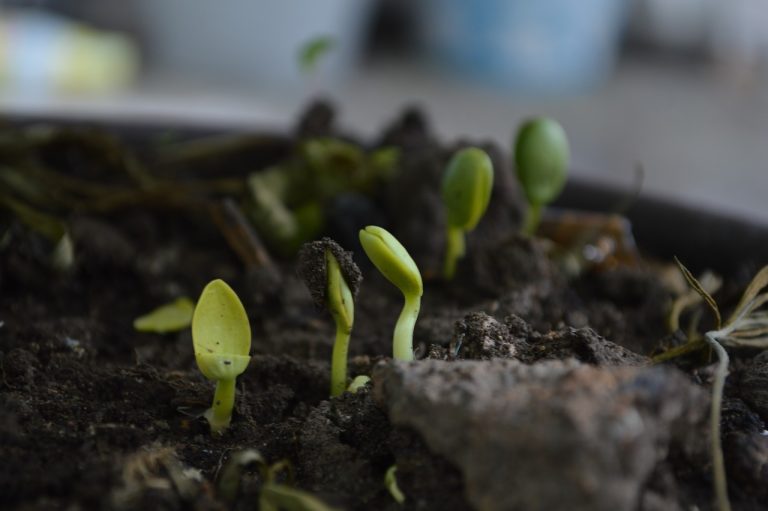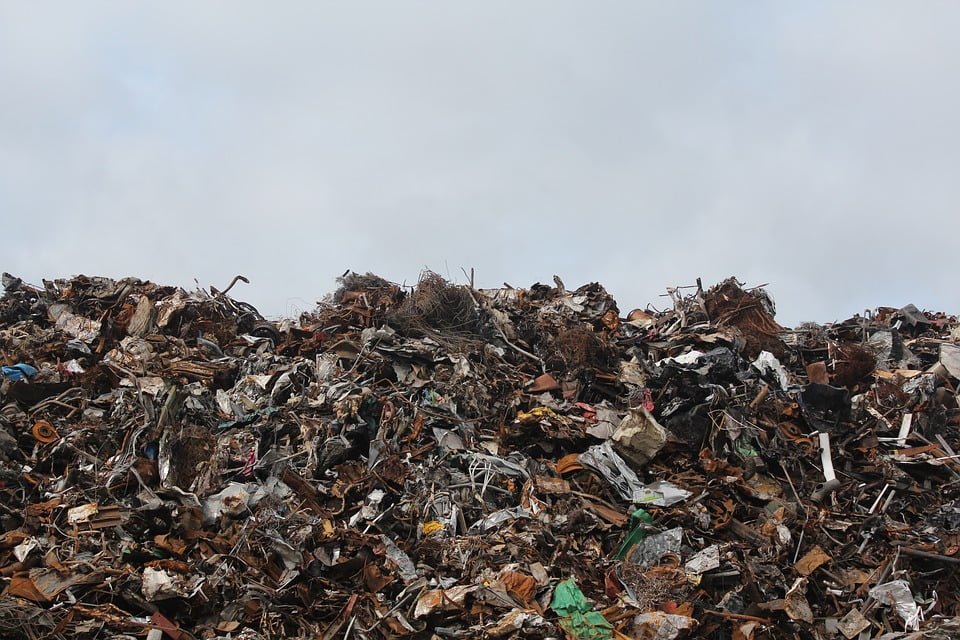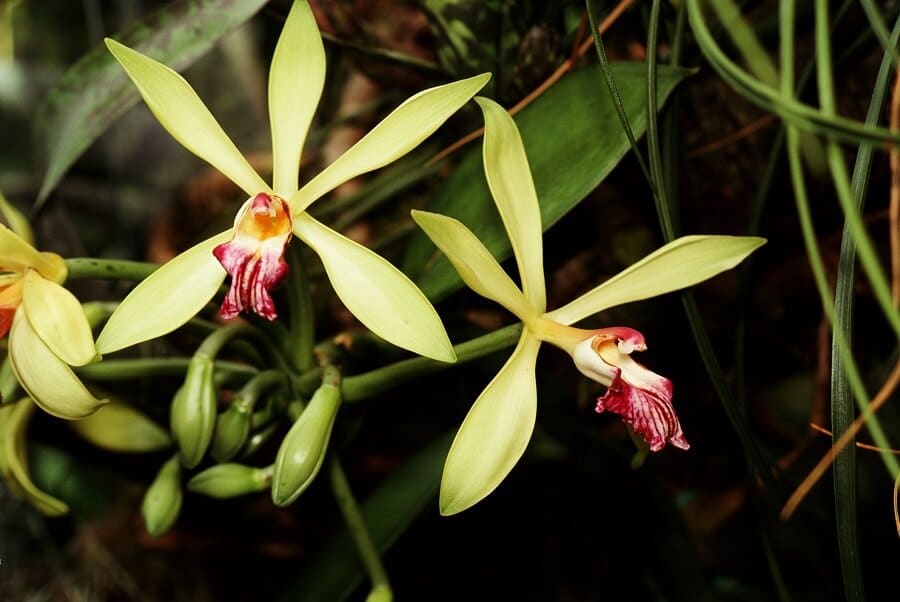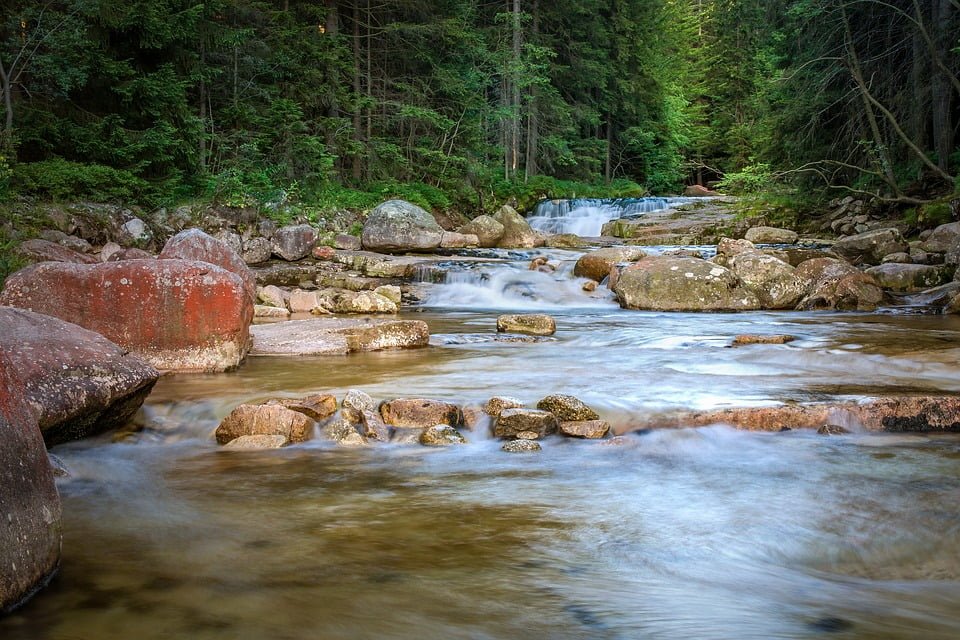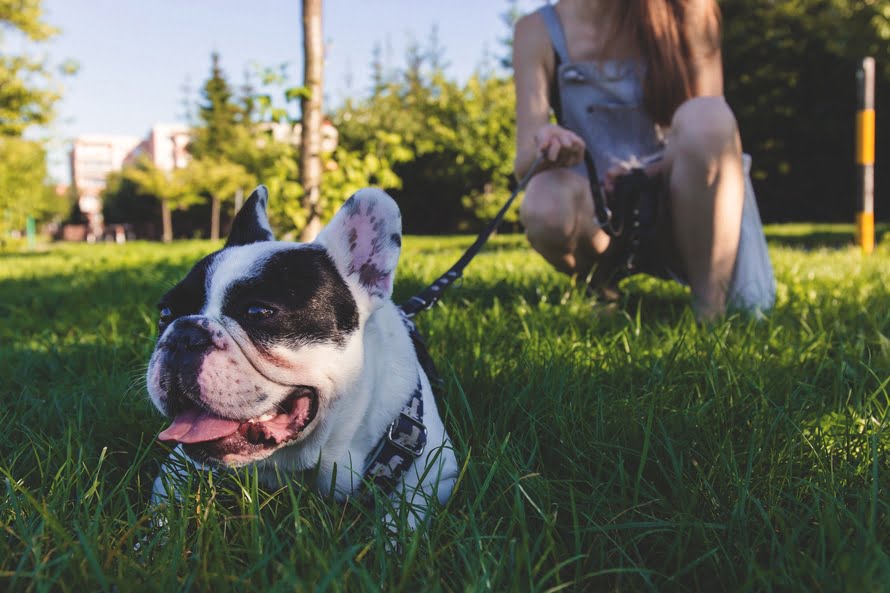Composting 101: Know the Basics of Compost Composition
Put simply; compost is decomposed organic material. You generally use compost the same way you’d use chemical fertilizers and plant food.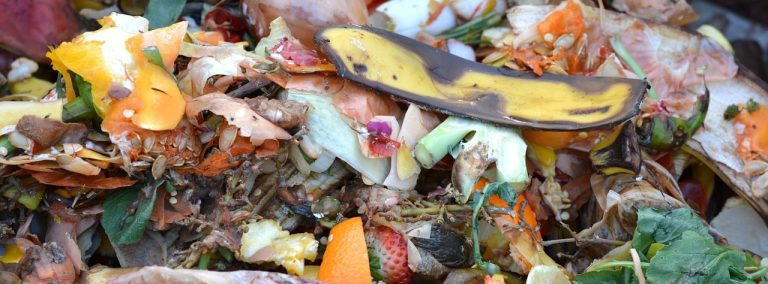
How much waste you can recycle with composting
Composting is one of the best ways to get rid of the inedible parts of your food. For instance, do you like bananas? Do you eat the peels? You most likely don’t. If you’re like most banana-eaters, you throw the peels into the garbage. What if you could eat your bananas and not add to the world’s waste with all your peels? Banana peels are chock full of potassium, sodium, calcium, magnesium, and other nutrients your plants need. The peels are heavier than other things you might toss into a compost pile, but you can cut them into smaller pieces and throw the pieces in. Once you’ve done that, you’ve added some extremely nutritious fertilizer to your compost, and you’ve reduced your total household waste. The EPA estimates that Americans can save almost 1.2 pounds of food per day with composting. In 2015, we saved 2.1 million tons of waste through composting. It’s only about five percent of all the food waste we create, but that number continues to rise. How much food waste would you prefer to recycle than throw away? This is why composting is one of the most eco-friendly ways to handle food waste.Composting 101: Making Your Own Compost
That’s all well and good, but how do you actually compost? How long does it take? How much work does it require? Those are all excellent questions, and no composting 101 lesson would be complete without the answers. Check out this video on how Pure Living started theirs:Difference between compost, manure, and chemical fertilizer
First off, you need to know the difference between these three things. As we said earlier, compost is decomposed organic material, like all your fruit and veggie scraps from your kitchen. Manure is animal feces, but the type of manure that works best as fertilizer is known as green manure. You generally get green manure from herbivores like cows and horses. Chemical fertilizer is the fertilizer you buy at garden stores. It usually contains some combination of nitrogen, potassium, and phosphorus. It also contains some traces of other elements that aid in plant growth.What materials are suitable for composting
So what can you really use in compost? You want materials that are nitrogen-rich greens and carbon-rich browns. That means: You want green leaves, plant trimmings, and scraps. Used tea bags and coffee grounds, eggshells, fresh grass clippings, and fruit and vegetable scraps will work well, too. You also want brown things like dead plants and leaves, dry straw, dead grass (like thatch), and even sawdust from untreated lumber (you don’t want to use treated lumber since it has chemicals in it that could be dangerous to your plants).What to avoid using as compost
Avoid using meat, fish, animal fats and byproducts. These things can attract everything from small pests to raccoons and other animals you don’t want in your yard. While it is possible to compost this type of waste, it’s certainly not for beginners and is likely to cause you more harm than good. You might also believe that your pets’ feces would add good bacteria to your compost. After all, maintenance staff often use manure for fertilizer around large complexes and athletic fields. However, your dog’s or cat’s feces could introduce diseases to your plants, too, and you really don’t want that. Shredded newspaper and office paper -– basically, any treated paper or paper with ink -– are also bad ideas. Many places say using newspaper or other scrap paper is fine, but that ink will get into your compost. It’s better to avoid using these things altogether. Barbeque ashes are likewise a bad idea, as is sawdust from treated lumber (which we mentioned above). Here’s a quick do’s and don’ts video to help you weed through your composting journey:Nitrogen to carbon ratio
You need a good nitrogen to carbon ratio to get good compost. But you’re probably not a plant biologist, right? If you were, you might not need to read a composting 101 article. Fortunately, there’s a simple way to determine a good nitrogen to carbon ratio: Just put two parts brown material to one part green material in your pile. So however you decide to measure your material, maintain that ratio and you should have a good mix. That ratio will also help generate the heat necessary for the material to turn to compost and kill off weed seeds.How to turn your organic waste into compost
Composting isn’t as easy as just throwing everything into a pile and waiting for it to decompose. Water and heat are necessary for composting, too. Here’s how you start composting: Find a good spot of bare ground on which to put your pile. If you start this way, you get the benefit of worms and other beneficial organisms straight from the ground. Then: Build a layer of twigs and straw a few inches thick. You need the drainage and the airflow. Otherwise, you’ll have problems. But you’re just getting started: Add wet things like kitchen waste, and dry things like dead leaves, straw, and other brown materials. Alternate layers of moist material with layers of brown material. If you’re using sawdust or wood ashes, sprinkle those in very thin layers. If your sawdust and ashes are too thick, they’ll just turn into clumps and won’t decompose properly. After that: Add your green material, like your fresh grass clippings and other fresh yard waste. Now that you have your pile, you need to keep it moist either through active watering or letting the rain do it. You may also have to cover it with plastic sheeting, or anything else that will occasionally prevent water from getting in. Your compost should be good and damp, but not soaked. Plus, covering it helps keep the heat in. Heat is necessary for proper composting and is generated as things in your compost decompose. Last but not least: You need to turn your compost every couple of weeks. Use a pitchfork or a shovel. Turning helps to aerate your compost pile, which allows oxygen in. That, in turn, helps speed the composting process. And this is the stuff you’re after at the end of your composting adventure: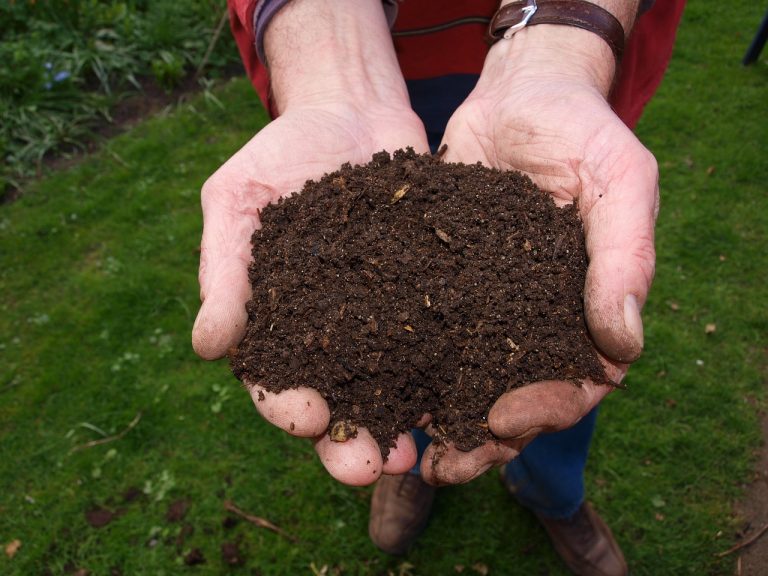
Composting 101: Equipment You Need
Besides organic material, what do you need to make compost? You need a place to keep it, like a bin. You can build a container with some metal fencing and a bare spot behind your shed or yard. There are also compost bins and tumblers you can buy, which our composting 101 lesson will get into in just a little bit.Easy composting methods
Let’s face it, the idea of having to turn your compost pile every couple of weeks means you have another chore to add to your already busy schedule. Fortunately, there are ways to make turning your compost pile easier. Here’s a great method: No-turn composting. If you mix enough straw into your compost pile, you won’t have to turn it to aerate it. You can then harvest compost from the bottom and add more material to the top. Furthermore, you may actually get better compost with this than with standard composting methods. However, it’s difficult to know how much straw to add to your pile to make this work. Therefore, you can buy tumbling compost bins, which you just turn over periodically. Some tumblers have spikes inside to help with aeration and prevent clumping. Most have holes on the ends to help bring in fresh air as well.Tumbling composters vs. open compost piles
The great news about tumblers: They’re specifically insulated to help speed up the composting process. And because they’re enclosed, they both prevent critters from getting into your compost, and they help contain the odors from your compost (because let’s be real: Rotting things stink). You can also use these year-round, whereas in colder environments, you can’t compost nearly as effectively with a standard pile because it becomes too difficult to generate heat. With an open compost pile, you have to worry about the weather, you have to worry about turning it manually, and you have to be willing and able to tend it whether you feel like it or not.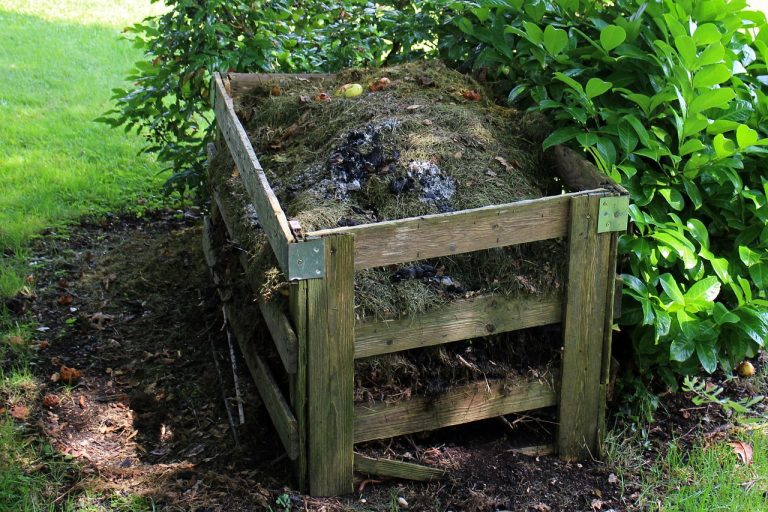
DIY compost bin
If you’re looking to save money on compost bins, you can build your own:- Get a heavy-duty garbage can with a very secure lid
- Drill aeration holes that are roughly one centimeter in diameter around the ends of the can
- Attach a length of 2×4 to the inside to help mix up the material
- Fill it with your composting materials
- Turn it on its side and roll it periodically to mix it up
Electric composters
Did you know that electric composters exist? They work very quickly because they heat the organic material to very high temperatures. Some of them, like this one, are small enough to fit in your kitchen. And that means: You can compost right in your kitchen with minimal hassle. In fact, you can scrape your plates, pots, and pans right into the composter instead of into your garbage disposal. Not only do many electric composters fit in your kitchen, but they’re also manufactured in such a way that there’s very little odor. So you don’t need to worry that you’ll stink up your whole house until the end of time to compost indoors! The downside? These tend to be small. Even though they make compost quickly, they don’t make very much. So it still takes a lot of time to get a good amount of compost, particularly if you plan to use compost over a large area.Heat is essential to quick composting
Electric composters use high levels of heat to turn your organic waste into compost quickly. Done right, every compost pile will generate heat as the material in it decomposes. If you’re merely using an outdoor bin and turning it over yourself, you’ll get a decent amount of compost within several weeks to several months. There is such a thing as cold composting. It takes less effort, but a lot longer to get compost this way.
Composting 101: Avoid this mistake
Regardless of whether you’re hot composting or cold composting, there is one mistake you can easily make that will make everything more difficult for you. Unless you’re using a small composter, don’t start your compost pile really small. Your compost pile needs mass in addition to organic material and water to work. So, keep this in mind: If you only have a small amount of material to work with, look for or build a small composting bin. That will help you get started, even if you don’t yet have a lot of material to work with.How much compost you need for your yard size
Now that you know what you can use for compost and the basics of how to do it, how much do you need? How do you calculate that? You probably won’t be surprised to find that it depends on what exactly you’re doing. Are you planting a new lawn? Are you looking to rejuvenate and fertilize your existing lawn? Maybe you have a new garden, and you want to give it its best chance. Regardless, you need to know how much compost you require. For new lawns and gardens, you’ll want an inch to two inches of compost. To overseed a lawn, 1/4 to 1/2 inch is sufficient. Now you get to do some math: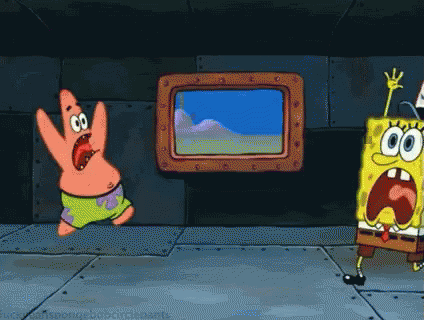
- 30 x 50 = 1,500 square feet of surface area
- 1,500 x 144 = 216,000 square inches
- 216,000 x 2 = 432,000 cubic inches of compost needed for your yard
- 432,000 ÷ 1,728 = 250 cubic feet of compost
Composting 101: Compost vs. Chemical Fertilizer
If you’re making your own compost, you’re spending very little extra money because you ought to be using material you’ve already got. However, unless you use a large electric composter, you’ll spend more time making compost than you will buying chemical fertilizer. This, perhaps, is one of the reasons people opt for chemical fertilizers. It’s difficult to compare the costs of chemical fertilizers to the costs of compost because they’re two completely different things. On the other hand: Compost is eco-friendly, and at garden stores, tends to be cheaper than chemical fertilizer. It’s difficult to overestimate the benefits of compost, especially when compared to chemical fertilizer. It seems the only real drawbacks to making your own compost are the need for patience and to take care not to put diseased plants or seeds in your pile. Chemical fertilizers have precise measurements of nitrogen, phosphorus, and carbon, whereas compost is a guessing and measuring game. You also don’t have to wait weeks or months to apply it. In short: Applying chemical fertilizer is easier than composting. Yet it’s not the safest thing on the planet — not even for your own plants.Dangers of chemical fertilizers
There are some problems with chemical fertilizers. While compost is intended to make your soil a healthy environment generally, fertilizers target specific plants and specific nutrient deficiencies. For instance: If you have a lot of clover in your lawn, you probably have a nitrogen deficiency. You can fertilize your lawn with a chemical weed-and-feed. That will help address the immediate problem. But because chemical fertilizers are so targeted, it’s very easy to overfertilize. You can burn your lawn with the wrong fertilizer, or even too much of the right fertilizer. These products also mess up your soil’s composition entirely, making it even harder to maintain healthy plants. This is what you want: You want to improve your soil, too, so that your whole yard is healthier going forward. Part of the point of going through composting 101 is to learn how to make your yard healthier overall. Chemical fertilizer won’t do that in the long run.Other dangers from chemical fertilizers
One of the most significant environmental dangers of chemical fertilizers is the fact that they leach into groundwater, and also contaminate runoff. When that happens, you get problems with algae growth, which, in turn, starves fish of the oxygen they need. If you live in Florida, nobody needs to tell you about problems with algae blooms. Florida has a severe problem with toxic algae blooms, and chemical fertilizer is part of the problem (another part of the problem is leaky septic tanks). No, you can’t save Florida’s waters with composting, but you can definitely reduce your impact on the environment.Can Composting Help Reduce Indoor Ceiling Fan Energy Usage?
Composting can make a significant difference in reducing indoor ceiling fan energy usage. While the topic might seem unrelated, understanding the differences between indoor and outdoor ceiling fans reveals an interesting connection. By composting organic waste, we can produce nutrient-rich soil that enables us to grow indoor plants. These plants improve air quality and reduce the need for air conditioning, ultimately decreasing indoor ceiling fan energy usage.
Composting 101: Buying Compost Instead of Making Your Own
This is all well and good. You now know what compost is good for, what it’s made of, and why it’s better than chemical fertilizer. But here’s the thing: You’re also painfully aware that you don’t have the room for a composting bin or tumbler outside and you don’t really have space for an electric composter inside. Does this mean you can’t do your part to make your plants healthy and save the environment? No. Thankfully, though, compost is easy to find. You need to know where to look, and in our composting 101 lesson, you’ll also learn what questions to ask and what, specifically, you should look for.Where to find compost if you can’t make your own
Here’s the thing about buying compost: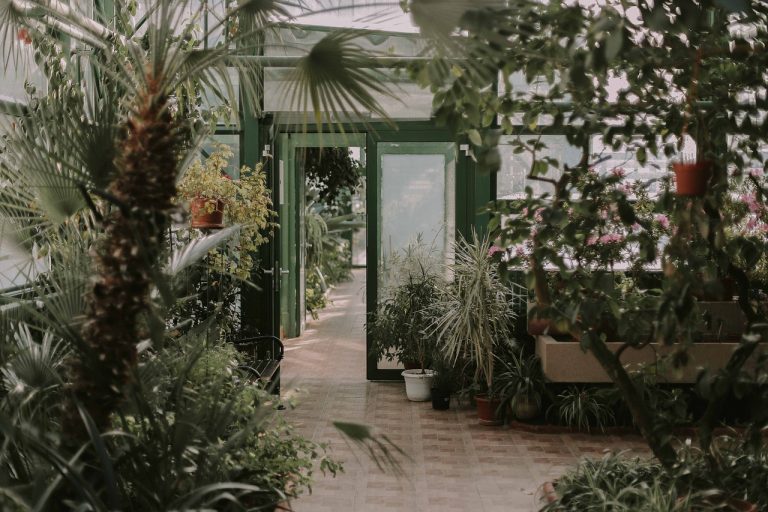
Problems with compost from certain places
Besides the above, the compost you’ll find at big box stores like Home Depot may have problems. Some companies actually use raw sewage in their compost. Others don’t ensure that the material they use is fully decomposed before bagging it and shipping it. How do you ensure that you’re buying high-quality compost? High-quality compost contains leaf mold (yes, we know, gross, but it’s a necessary component of compost), yard waste, and manure. You might find these ingredients listed on the bag or your garden center may be able to tell you what’s in their compost. Avoid compost that contains “inert ingredients,” because who knows what those are. You also don’t want to buy compost that has biosolids in it. Here’s a quick composting 101 tidbit: Biosolids are those really disgusting wastes, like the sewage, we mentioned above. You can also ask people you know where they buy their compost, particularly if you know they’re into gardening. But check this out: For this part of your Composting 101 lesson, we’ll give you an easy way to tell for yourself whether or not you’re looking at good compost. It should feel like damp earth, but lighter and (dare we say it?) fluffier. Fluffier? Yes, fluffier. Poor compost clumps very easily and can feel like heavy handfuls of clay. Compost shouldn’t feel like it clumps very easily. At the big box stores, you’ll often find compost that feels dense. You might find this at your garden center, too, but one would hope they would have something that’s higher quality than the big box stores.Other things that should not be in your compost
Another problem you might find with buying compost is the presence of herbicides that don’t break down. Farmers tend to use these kinds of herbicides, which means they may end up in any manure in your compost. The bad news is: If you’re using compost for a vegetable garden, you could wind up killing plants like your tomatoes and beans. And even if you don’t, do you really want herbicides in your food? That’s why it’s such a good idea to know where your compost comes from, and what’s in it. This also makes an excellent argument for finding a way to make your own compost. At least then you have a better idea of what’s in it.Composting for Your Lawn vs. Composting for Your Garden
There actually isn’t much difference between composting for your lawn and composting for your garden. For this particular composting 101 lesson, you really need to know the difference between compost and potting soil. We’ve already discussed what compost is. But how is it different from potting soil? Potting soil is a combination of peat moss, tree bark, and perlite (which are those little tiny white spheres you see in potting soil). Potting soil is light and airy but doesn’t contain much in the way of nutrients. Most gardeners use potting soil to start seedlings and mix compost in. If you buy potting soil from a home improvement store, the bag in which it comes will tell you what it is. But if you aren’t sure, look for perlite. Compost doesn’t have perlite in it. You can also ask at your garden center if you choose to go there. Ideally, they’ll have someone who can not only explain the differences but show you the differences and give you a hands-on composting 101 lesson.Composting 101: Understanding Composting Enhances Your Yard and Saves the Environment
So now, at least insofar as your own yard maintenance is concerned, you should be able to make your yard healthy and beautiful with compost. Remember: Making your own compost is best because you know what goes in it. You’ll also get a certain feeling of pride you can only get from looking at something and saying, “Yep! I did that! That’s my handiwork. I rule.”